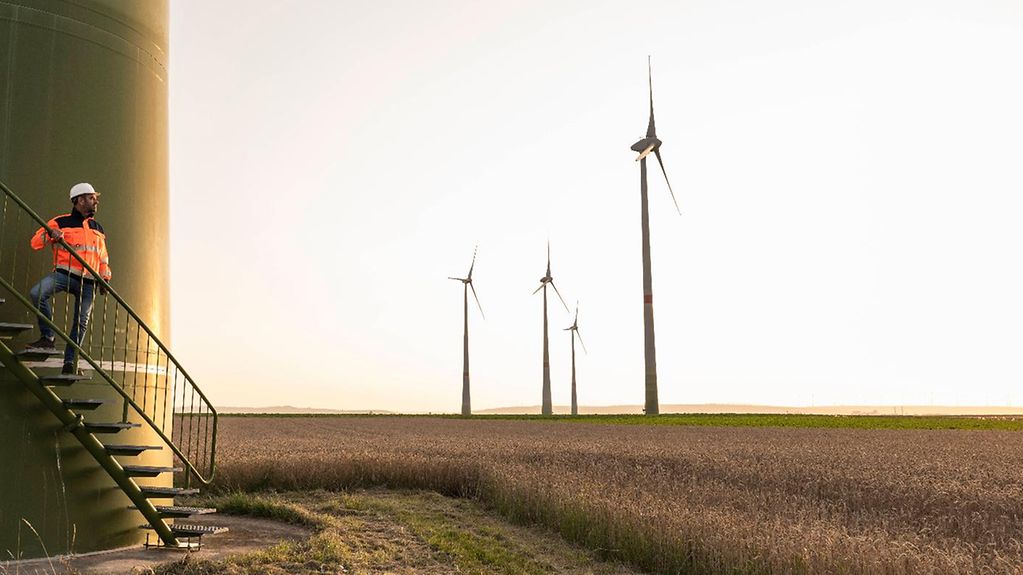Federal report to the Cabinet
Last year the Federal Government spent 1.3 billion euros on research into innovative energy technologies, as shown in the “Federal Energy Research Report 2022” recently approved by the Cabinet.
3 min reading time

One focus of funding is the area of “renewable energies”.
Photo: imago images/Westend61
Innovative, low-carbon and highly efficient energy technologies will be crucial for a secure, economical and climate-friendly supply of energy in the long term. They are indispensable for the transformation of the energy system and a key factor when it comes to developing sustainable perspectives. Research funding in the energy sector has a vital contribution to make here: it is capable of modernising the energy supply, strengthening the German and European economy and securing jobs in Germany as an industrial base.
What is the Federal Government doing?
It is supporting this process by promoting the research, development and demonstration of modern energy and efficiency technologies under its 7th Energy Research Programme “Innovations for the Energy Turnaround”. The programme covers the entire innovation cycle – from initial basic research through to the testing of modern energy technologies shortly before they reach market-readiness.
Who receives financial support?
In addition to research institutions and universities, funding is targeted at companies that invest in energy research and innovation. In 2021, the Federal Government made a sum of 1.311 billion euros available for this purpose under the 7th Energy Research Programme – an increase of 8 percent over the previous year’s 1.216 billion euros. The positive trend of recent years underpins the central role of energy research in paving the way for the energy transition.
The thematic focus of project funding is on “renewable energies and energy efficiency”, in particular the “Energy generation” and “Energy transition in the consumer sectors” programme areas. In addition to project funding, the Federal Government also finances research and development under its energy research programme through institutional funding provided by the Helmholtz Association of German Research Centres.
How will innovations be put into practice?
It is important for climate protection that new technologies are able to find their way out of the laboratory and into the economy and society at large. The transfer of innovation is to be accelerated in particular through the instrument of living labs, where innovative technologies can undergo practical testing in real-life conditions on an industrial scale, thereby closing the gap between research and energy industry practice.
Why is there a focus on promoting hydrogen technologies?
Green hydrogen technologies offer enormous opportunities in terms of climate protection, sustainable jobs and new potential for value creation. For example, green hydrogen – produced from renewable electricity by means of electrolysis – can be used as a raw material in steel production or in the chemical industry. In the transport sector, it can be used directly in fuel-cell-powered vehicles or as a component of synthetic fuels for shipping and aviation.
This is the why research and development in the field of hydrogen technologies has been further expanded. Particularly worthy of mention here are the hydrogen lead projects that are seeking to develop technologies for the series production of electrolysers, offshore hydrogen production and hydrogen transport.
The Federal Energy Research Report provides a transparent overview of the Federal Government’s funding policy, offering an overall view of public funding based on updated figures for the European Research Framework Programme and the energy research expenditure of the federal states. The enArgus portal presents the figures from this report on federal project funding in an easy-to-understand format. In addition, the report indicates progress in energy transition research based on selected research highlights.